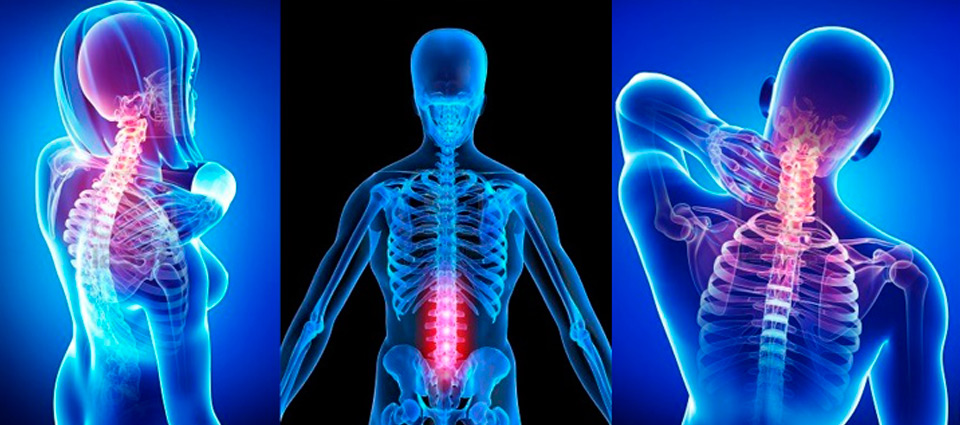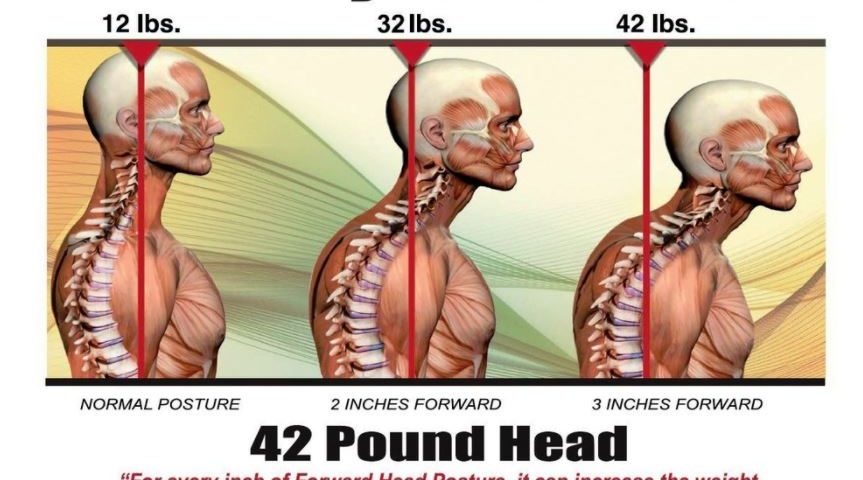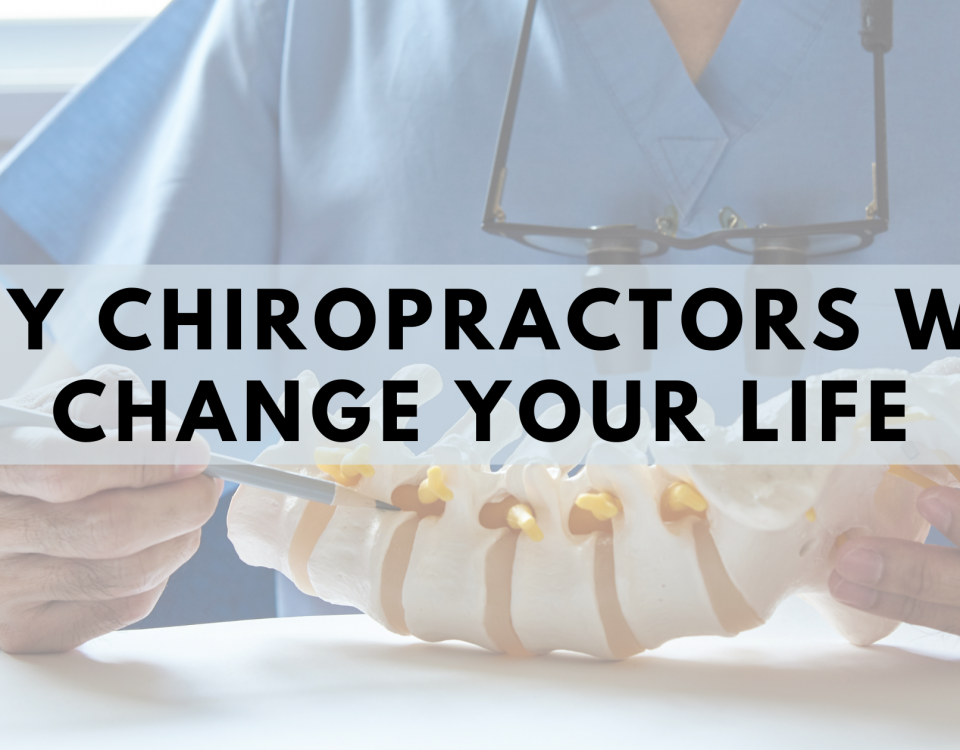
PET Scan Showing the Impact of a Chiropractic Adjustment
May 31, 2017
Do I Need an Attorney After a Car Accident?
August 24, 2017We all remember our parents or grandparents telling us to “sit up straight” and “correct your posture.” We know that having good posture is a positive but how seriously do we really take it? We may think about our posture a couple times a day and sit up straight, move our shoulders back, but then what? We revert to our typical slumped over posture in a matter of a minute or two.
Maybe, we don’t take posture to seriously because we don’t fully understand WHY posture is important. We may have been told that it makes us look better, more confident, feel better, prevent back pain but we were never told how this happens.
Well, what if I told you research has shown us how and why bad posture negatively affects us and it may be more important than you ever imagined. Bad posture has been shown to cause headaches, early spinal degeneration, decrease lung capacity, increase risk of cardiovascular disease, multiple musculoskeletal pain syndromes, increase fatigue, decrease immunity, effect mood, depression, and even memory.
To explain, let’s start from the top with your head sitting on top of your shoulders. If you are like the rest of us, we spend a lot of our days in a flexed position looking at a computer monitor, cell phone, TV, or driving. This position rolls our shoulders forward but this also moves the weight of our head off the shoulders and onto the spinal discs. This in turn results in what is call ‘forward head posture’. Let say your head weighs 12 pounds, for every inch your ear falls off your shoulder and moves forward you are doubling the weight of your head. Look at your posture from the side in front of a mirror. Does your head sit on top of your shoulders or fall forward? Your ear should line up with your shoulder from the side. If your head is 3 inches in front of your shoulders, the muscles in the back of your neck now must strain to hold 42 pounds of weight, which also compresses the spinal discs, instead of 12 pounds. This can lead to disc herniations and degeneration overtime all due to poor posture.
As you can imagine, this puts an enormous amount of strain on the muscles of the neck and shoulders. Research in the European Journal of Applied Physiology and Occupational Physiology has shown that blood flow through a muscle decreases as the muscle contraction increases. Blood is virtually cut off at 50-60% of continuous maximal contraction. Lack of blood flow results in buildup of lactic acid and other metabolites that cause muscle pain and soreness (1). This leads to neck and upper back muscles feeling tight, sore, and fatigued and combined with forward head posture explains why some people only get temporary relief with massage. This is because the underlining issue of why the muscles are tight to begin with needs to be addressed.
So now we understand the stress the muscles are under but what about the extra stress put on the joints of the spine? Forward head posture causes excessive stresses on the vertebral bones in the cervical spine. Wolff’s Law of Bone Adaptation states that the body will lay down new bone in an area of stress or strain to strengthen it, this is the body’s natural way of stabilizing a stressed area. Research shows that this process results in arthritic bone spur growth in the cervical spine (2). This postural distortion is a structural shift in the spine and causes a straightening of the necks natural curve which causes extra stress and early onset of osteoarthritis in the neck.
Increase muscle tension, potential for early onset of arthritis, these consequences seem like common sense but did you ever imagine that your posture could be affecting every cell in your body? Forward head posture can add up to 30 pounds of abnormal leverage pulling the entire spine out of alignment and may result in the loss of 30% of vital lung capacity,” says University of Southern California’s director of physical medicine and rehabilitation, Dr. Rene Cailliet MD.

As forward head posture decreases lung capacity, it affects the body’s ability to effectively oxygenate cells. This can lead to asthmatic conditions, blood vessel problems and heart disease. This oxygen deficiency affects the entire gastrointestinal system leading to altered nutrient absorption and peristaltic activity. Lowered oxygen states also decrease endorphin production turning the perception of non-painful sensation into painful experiences. Nobel Prize recipient Dr. Alf Breig put it simply when he said, “Loss of the cervical curve stretches the spinal cord 5-7 cm and causes disease.”
Furthermore, the Journal of the Division of Health Psychology, American Psychological Association published results on how posture affects stress responses. The “upright participants reported higher self-esteem, more arousal, better mood, and lower fear, compared to slumped participants.” In addition, those sitting in a slumped position “used more negative emotion words, first-person singular pronouns, affective process words, sadness words, and fewer positive emotion words and total words during the speech (3).”
Studies have shown that corrective based chiropractic care effectively reduces forward head posture. Research by Morningstar and Jockers showed that this chiropractic process dramatically enhanced lung function. As the respiration process improves more oxygen is delivered to the body. This improves oxygenation into every organ system of the body dramatically improving overall function (4).
We specialize in corrective care techniques that reduce or eliminate forward head posture and restore the natural curves of the body. This is done through specific adjustments that take pressure off the brain stem, improve nerve flow, and enhance the body’s functional capability. Corrective rehabilitative exercises will be prescribed to address postural abnormalities and create lasting postural changes that can be demonstrated to you with pre-and post-x-rays. Call (949)470-4757 for an appointment today!We specialize in corrective care techniques that reduce or eliminate forward head posture and restore the natural curves of the body. This is done through specific adjustments that take pressure off the brain stem, improve nerve flow, and enhance the body’s functional capability. Corrective rehabilitative exercises will be prescribed to address postural abnormalities and create lasting postural changes that can be demonstrated to you with pre-and post-x-rays. Call (949)470-4757 for an appointment today!
References
1. Sjøgaard, G., Savard, G. & Juel, C. Europ. J. Appl. Physiol. (1988) 57: 327
2. Strain energy density used as the biomechanical signal for osteophyte growth in the cervical spine – biomed 2009. John A. Wheeldon, Narayan Yoganandan, Frank A. Pintar. Biomed Sci Instrum. 2009; 45: 143–148.
3. Do slumped and upright postures affect stress responses? A randomized trial.
Shwetha Nair, Mark Sagar, John Sollers, 3rd, Nathan Consedine, Elizabeth Broadbent. Health Psychol. 2015 Jun; 34(6): 632–641
4. Improvement in Forward Head Posture, Cervical Lordosis, and Pulmonary Function with Chiropractic Care, Anterior Head Weighting and Whole Body Vibration: A Retrospective Study-Mark Morningstar DC, DAASP, FRCCM, FAAIM 1, David Jockers DC, MS, CSCS2J. Pediatric, Maternal & Family Health – October 12, 2009
Additional Studies
5. Postural control deficits in people with fibromyalgia: a pilot study
Kim D Jones, Laurie A King, Scott D Mist, Robert M Bennett, Fay B Horak
Arthritis Res Ther. 2011; 13(4)
6. A review of biomechanics of the central nervous system–part II: spinal cord strains from postural loads. D. E. Harrison, R. Cailliet, D. D. Harrison, S. J. Troyanovich, S. O. Harrison
J Manipulative Physiol Ther. 1999 Jun; 22(5): 322–332.
7. Effect of a classroom-based behavioral intervention package on the improvement of children’s sitting posture in Japan. Wataru Noda, Junko Tanaka-Matsumi. Behav Modif. 2009 Mar; 33(2): 263–273.
8. Sitting posture makes a difference-embodiment effects on depressive memory bias. Johannes Michalak, Judith Mischnat, Tobias Teismann. Clin Psychol Psychother. 2014 Nov-Dec; 21(6): 519–524
9. Herzberg U, Murtaugh MP, Carroll D, Beitz AJ. Spinal cord NMDA receptors modulate peripheral immune responses and spinal cord c-fos expression after immune challenge in rats subjected to unilateral mononeuropathy.J Neurosci 16 (2): 730-743 (Jan 15 1996)
10. Mobility and Upright Posture Are Associated with Different Aspects of Cognition in Older Adults. Rajal G. Cohen, Anita N. Vasavada, Michelle M. Wiest, Maureen Schmitter-Edgecombe. Front Aging Neurosci. 2016; 8: 257
Check out our other posts:





3 Comments
Thanks, great article.
I spent a lot of time to find something like this
I spent a great deal of time to locate something such as this